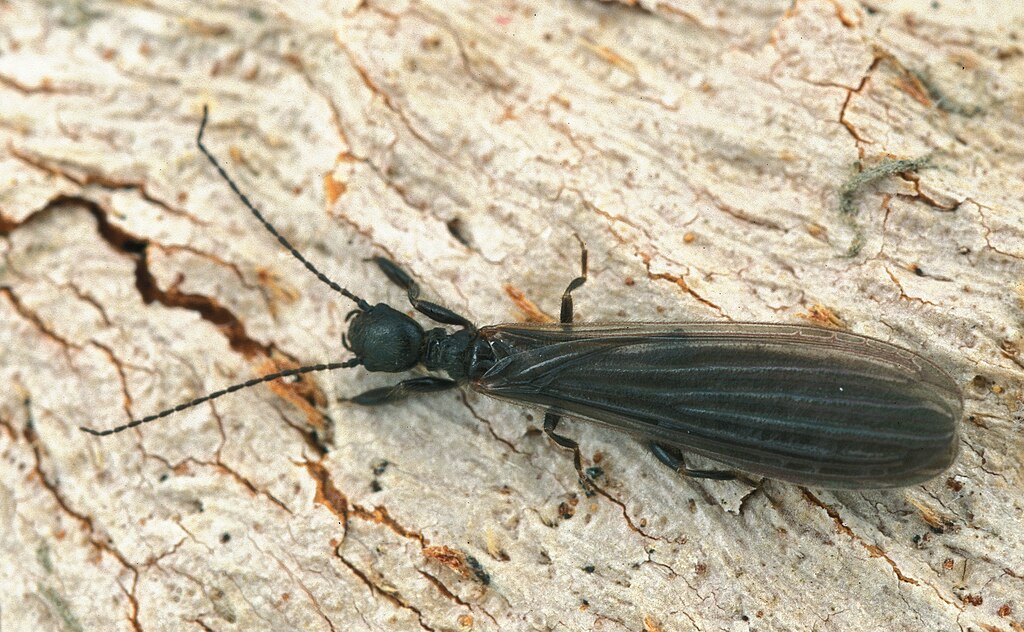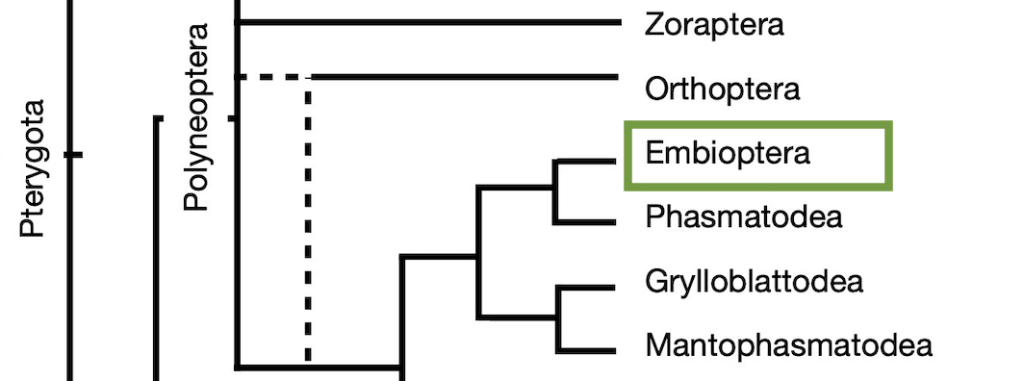21 Orders of Insects: Embioptera


Order Embioptera
Embioptera
- common names: web spinners or foot spinners
- Greek, ’embio’ = lively, ‘ptera’ = wing
- widespread; about 200 species, many undescribed
- well represented in tropical and warm temperate regions
- all species gregarious
- all life stages live in silken galleries or tunnels in sheltered spots e.g. under logs, stones, or bark
- feed on bark, moss, lichen, dead leaves and other plant material
Characteristics of Embioptera
Adults
- Small to medium (4-15mm), elongate, cylindrical bodies
- prognathous, mandibulate mouthparts
- reniform (kidney-shaped) compound eyes, ocelli absent; multi-segmented antennae, slender and filiform
- females wingless, in some species the males have two pairs of soft, membranous wings
- legs short, fore tarsus swollen with silk gland
- cerci two-segmented
Immatures
- Immature stages (nymphs) resemble small adults
Notes
The use of silk galleries are the most notable feature of Embioptera. Many of their distinctive morphological features such as prognathous head, aptery and the swollen fore-tarsi are adaptations to life in a silk gallery. The tarsal silk glands are present in the fore-tarsi in all instars. Embioptera will readily run in reverse within their gallery tunnels to escape incoming predators. In winged males, the wings will fold over the head when they run backwards!
Keen to learn more?
More about Embioptera:
Topic Review
Do you know…?
- the main anatomical features of webspinners
- how Embioptera are adapted to living in silk tunnels

